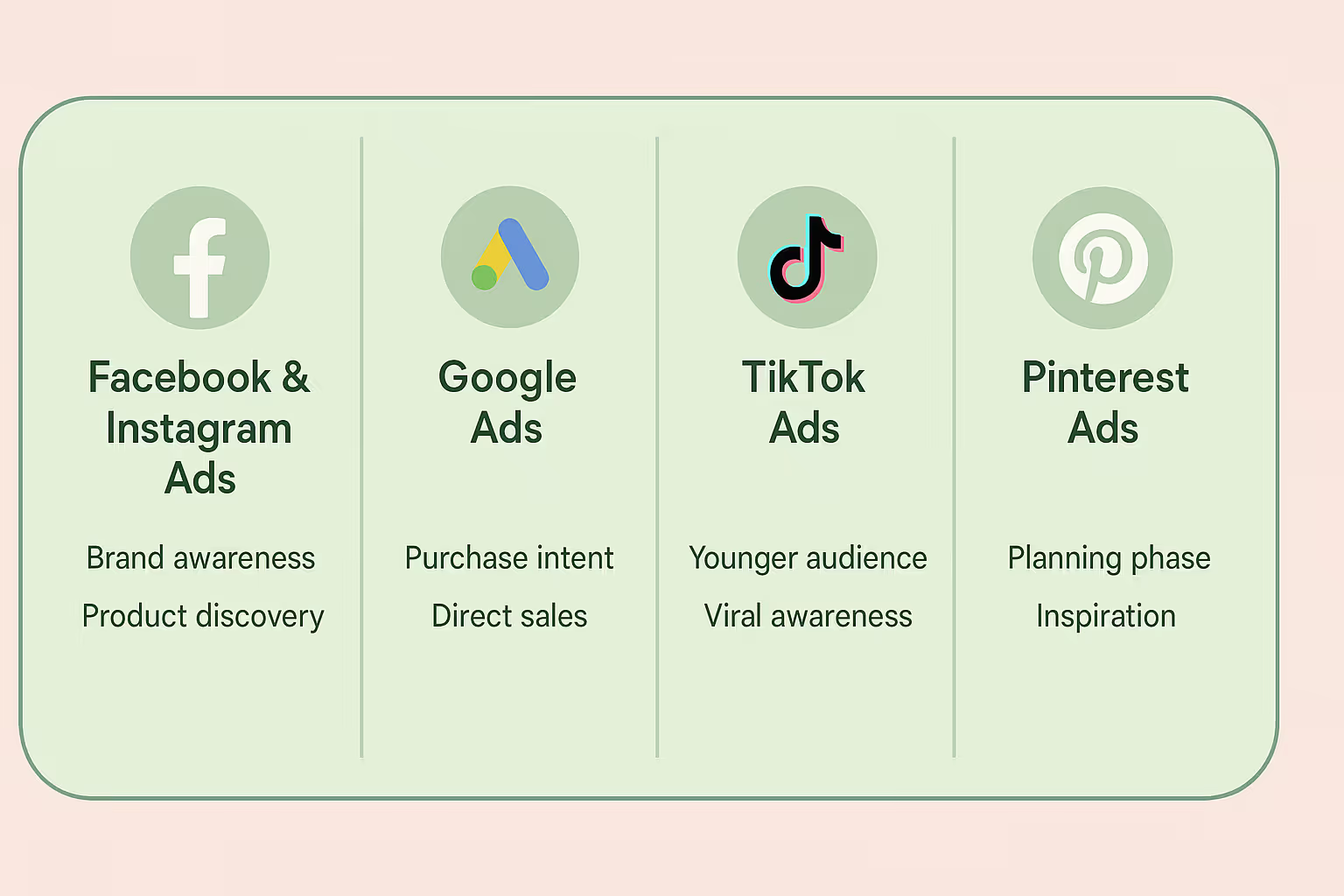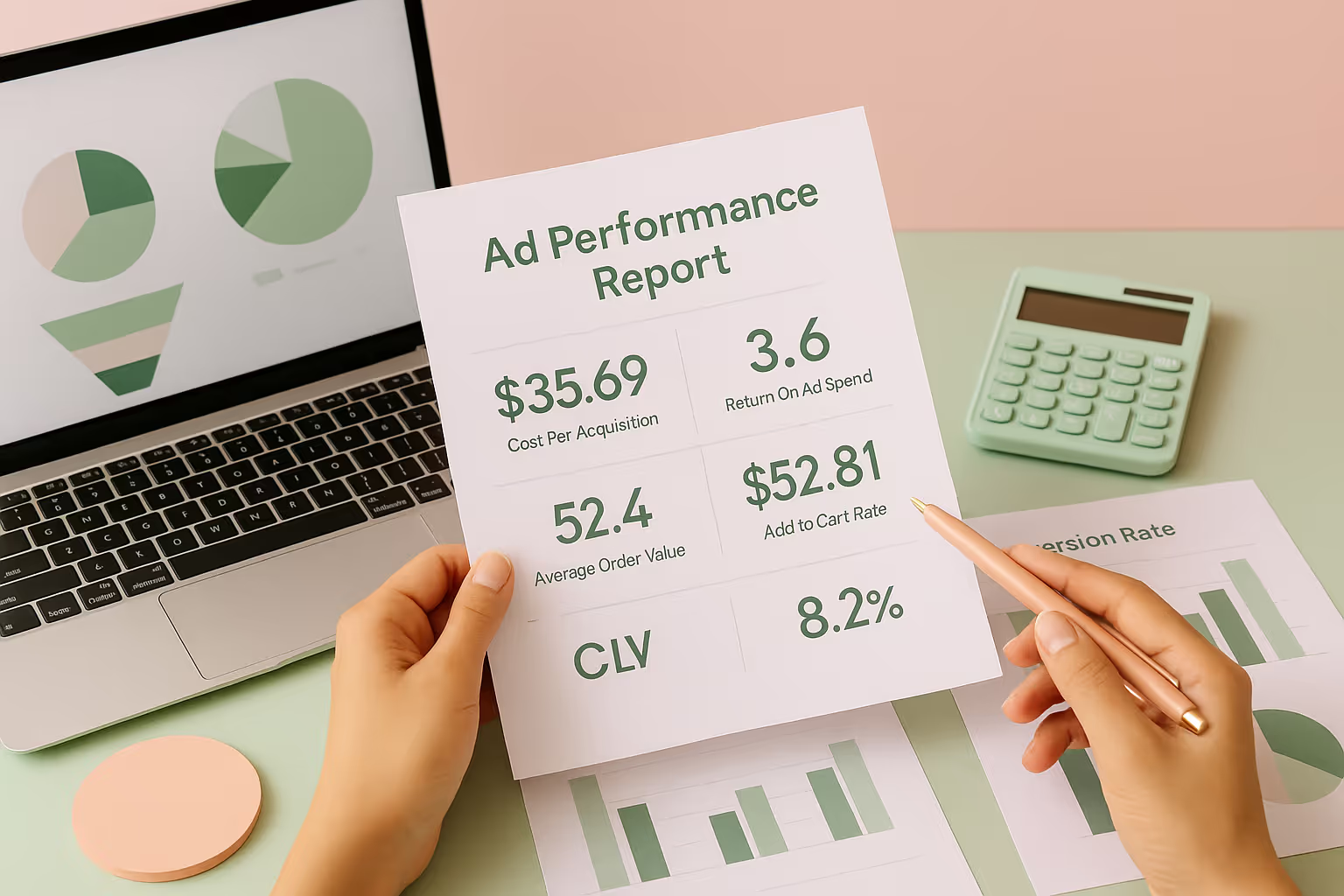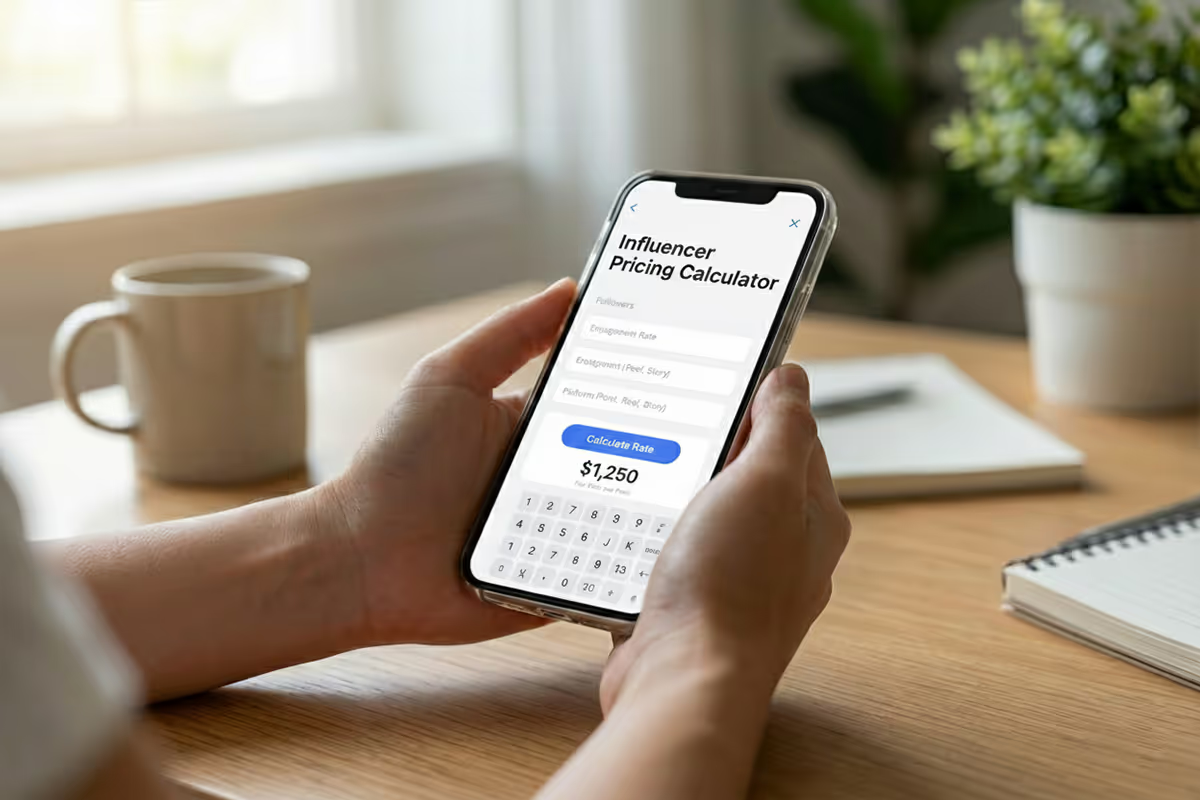How to Use Paid Ads for Beauty Products Marketing Effectively: Ad Creativity

Global beauty ad spend is projected to exceed $42 billion by the end of 2025, driven by brands competing for consumer attention across digital platforms.
With social media and search ads influencing over 65% of online beauty purchases, paid advertising is no longer optional, it's a strategic must.
Knowing how to use paid ads for beauty products marketing effectively helps brands, big or small, maximize ROI, reach high-intent buyers, and build lasting visibility. From skincare to makeup, tailored ad strategies can make all the difference in today’s crowded beauty space.
Create High-Converting Beauty Product Ad Creative with Simple Steps
When 65% of beauty purchases are influenced by ads, guess what separates scroll-past from sold-out? The right creative. Use this cheat sheet to match visuals and copy to your product type, and trigger instant attention from the right buyers.
Beauty is a visual category, making your creative assets perhaps the most critical element of your paid advertising success.
Visual Best Practices for Beauty Ads
- Showcase diversity in skin tones, ages, and features
- Use high-quality, well-lit photography that accurately represents products
- Include close-ups of textures, packaging, and application
- Demonstrate visible results when possible (before/after)
- Ensure colors are true to life, especially for makeup products
For skincare brands in particular, effective marketing requires a balanced approach that both educates and entices consumers. Learn more about specialized skincare marketing tactics that can elevate your paid campaigns.
Ad Copy That Sells Beauty Products
The words accompanying your visuals must work just as hard to convert viewers:
- Lead with unique selling propositions and key benefits
- Address specific pain points your product solves
- Include social proof (reviews, awards, certifications)
- Use sensory language that helps consumers imagine using the product
- Create urgency with limited-time offers when appropriate
Pro tip: Test different value propositions against each other to see which resonates most with your audience. Some beauty consumers are motivated by scientific claims and ingredients, while others respond better to emotional benefits like confidence and self-expression.
Choosing the Right Paid Advertising Platforms for Beauty Products

Not all advertising platforms perform equally for beauty brands. Here's how to select the most effective channels based on your goals and audience.
Facebook and Instagram Ads for Beauty Marketing
These Meta platforms remain powerhouses for beauty advertising due to their visual nature and sophisticated targeting options.
Best for: Brand awareness, product discovery, and retargeting campaigns
Key advantages:
- Rich targeting based on interests, behaviors, and demographics
- Strong visual formats are ideal for beauty product demonstrations
- Seamless shopping features that reduce friction to purchase
- Ability to create lookalike audiences based on your best customers
When promoting beauty products on Instagram, use a mix of feed posts, Stories, and Reels to showcase your products in action. For skincare products, before-and-after content often performs exceptionally well, while makeup products benefit from tutorial-style demonstrations.
Pro tip: Create separate ad sets for different audience segments and track which creative resonates with each group. Beauty consumers respond differently based on their skin concerns, age, and product familiarity, so a one-size-fits-all approach rarely maximizes ROI.
Google Ads for Beauty Products
Google offers multiple advertising formats that beauty brands can leverage at different stages of the customer journey.
Best for: Capturing purchase intent and driving direct sales
Key formats to consider:
- Search ads: Target specific beauty-related keywords
- Shopping ads: Showcase your products with images and prices
- Display ads: Retarget website visitors with visual reminders
- YouTube ads: Demonstrate beauty products in action
Beauty brands should focus on both branded terms (your product or company name) and non-branded search terms that indicate purchase intent, such as "best vitamin C serum" or "gentle cleanser for sensitive skin."
TikTok Ads for Beauty Marketing
TikTok has revolutionized beauty marketing with its authentic, trend-driven content approach.
Best for: Reaching younger beauty consumers and generating viral awareness
Effective approaches:
- In-feed ads that mimic organic content
- Branded hashtag challenges encourage user participation
- Partnering with beauty influencers for sponsored content
- Spark Ads that amplify your organic content
Beauty brands succeed on TikTok by focusing less on polished perfection and more on authentic demonstrations, unexpected results, and creator-style content that blends naturally into users' feeds.
If you're looking to sell through TikTok's native shopping experience, consider how TikTok Shop integration can streamline your fulfillment process and inventory management.
Pinterest Ads for Beauty Products
Pinterest functions as both a search engine and a social platform, making it ideal for beauty brands.
Best for: Reaching consumers in the planning and inspiration phases
Why does it work for beauty? Beauty is consistently among the top Pinterest categories
- Users are actively looking for ideas and products to try
- Higher average order value than many other platforms
- Longer content lifespan compared to other social media
Create "idea pins" that showcase beauty routines, ingredient education, or seasonal looks to capture Pinterest users during their discovery phase.
Advanced Paid Advertising Strategies for Beauty Brands
Once you've mastered the basics, these advanced tactics can help scale your beauty brand's paid advertising success.
Leveraging First-Party Data
With privacy changes impacting tracking across platforms, beauty brands should focus on collecting and utilizing first-party data:
- Email list segmentation for targeted ad campaigns
- Customer purchase history to inform cross-selling opportunities
- Website behavior to customize retargeting sequences
- Quiz results to personalize product recommendations
This data allows for creating highly targeted custom and lookalike audiences that typically outperform broader targeting options.
Omnichannel Remarketing for Beauty Products
Effective beauty marketing acknowledges that consumers typically need multiple touchpoints before purchase:
- Sequence ads across platforms to tell a cohesive story
- Show different product angles and benefits at each stage
- Progressively introduce stronger offers to hesitant shoppers
- Use email marketing in conjunction with paid ads for abandoned carts
For beauty brands with various product lines, including specialized offerings like private label skincare, a comprehensive remarketing strategy ensures potential customers see your most relevant products based on their browsing behavior.
Influencer Amplification for Paid Campaigns
Combine the credibility of influencers with the reach of paid advertising:
- Use Spark Ads on TikTok to amplify influencer content
- Create lookalike audiences based on influencer followers
- Repurpose UGC in your ad creative for authenticity
- Test influencer-created assets against brand-created assets
This hybrid approach often outperforms either pure influencer marketing or traditional ad creative, especially for beauty products where trust and demonstration are crucial to conversion.
Measuring and Optimizing Beauty Product Ad Performance

The beauty industry typically sees higher customer acquisition costs than many other categories, making measurement and optimization crucial for profitability.
Key Metrics for Beauty Advertising
Track these metrics to understand true campaign performance:
- Cost Per Acquisition (CPA)
- Return on Ad Spend (ROAS)
- Average Order Value (AOV)
- Customer Lifetime Value (CLV)
- Add-to-Cart Rate
- Checkout Abandonment Rate
Beauty brands should pay particular attention to the relationship between AOV and CPA, as acquiring customers at a loss can be strategic if their lifetime value justifies the initial investment.
A/B Testing Framework for Beauty Ads
Implement systematic testing across these elements:
- Headlines and primary value propositions
- Creative formats (static vs. video, lifestyle vs. product-focused)
- Audience targeting parameters
- Landing page experiences
- Offer structures and promotions
Focus on testing one element at a time to identify what drives performance improvements. For supplement-based beauty products, refer to these supplement advertisement best practices that can apply to beauty nutraceuticals as well.
Budget Allocation Across the Funnel
Distribute your beauty advertising budget strategically:
- Top-of-funnel: 30-40% for awareness and education
- Mid-funnel: 30-40% for consideration and engagement
- Bottom-funnel: 20-30% for conversion and retention
This allocation may shift based on seasonality, product launches, or business maturity. Newer beauty brands typically need to invest more heavily in awareness, while established brands can focus more on conversion-oriented spending.
Insider’s Approach: Mirror the Customer Journey with Funnel-Aligned Creatives
Top beauty brands boost paid ad performance by aligning creatives to each stage of the customer journey. Introduce broad benefits like “glowing skin” at the top, follow with ingredient trust or testimonials mid-funnel, then use urgency or exclusives to drive final conversions.
Running the same ad to every viewer misses this opportunity. Segmenting creatives by funnel stage can improve ROAS, shorten the purchase path, and give your paid beauty ads a competitive edge in a $ 42 B+ market.
Launch Your Beauty Product Advertising Success
Effective paid advertising for beauty products blends creativity with data-driven strategy. By choosing the right platforms, crafting strong visuals, and refining performance, your brand can rise above the noise.
Start with a small budget to test what works, then scale smartly. Consistent messaging and platform-specific content drive results.
Streamline operations with fulfillment solutions so you can focus on growth. With clear goals and ongoing optimization, paid ads can turn your beauty brand into an industry standout.
FAQ
Related blogs

Influencer Pricing Calculator: Find Your Fair Rate for Posts, Reels & Stories
.avif)
How To Market Pet Products Through Storytelling: Win Attention, Build Trust, and Boost Sales Naturally
.avif)
How To Market Coffee To Gen Z: The High-Impact Blueprint Every Brand Needs
.avif)

